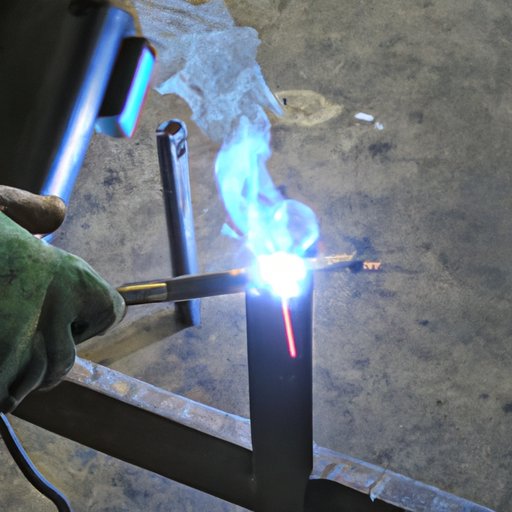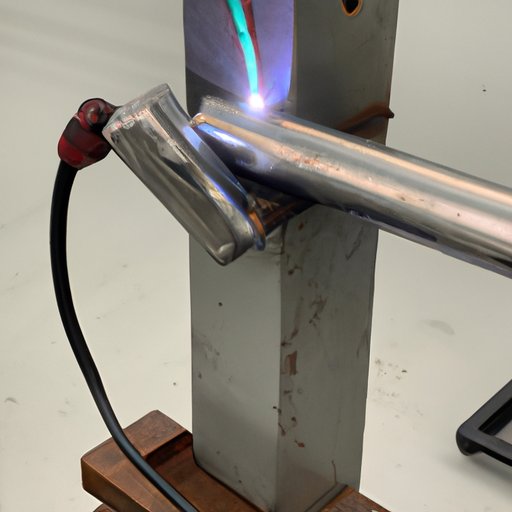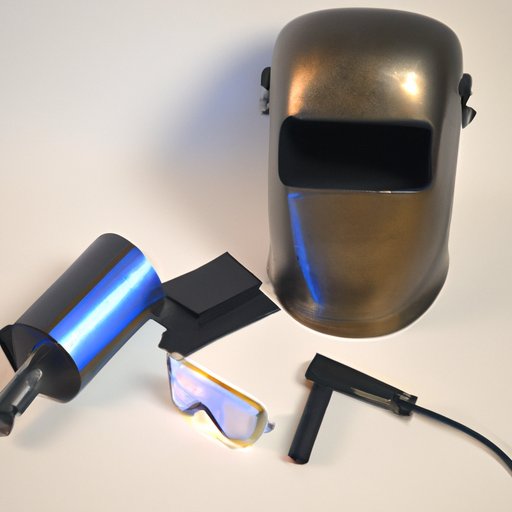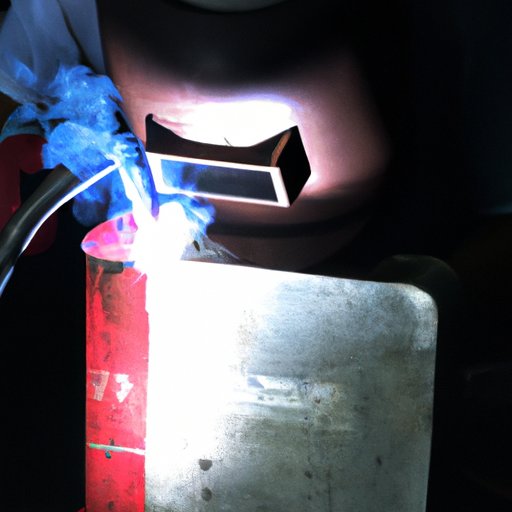Introduction
Welding technology is used in a variety of industries for joining metals and other materials. It is a process that uses heat, pressure, and/or a combination of the two to permanently join components together. In this article, we will explore the different types of welding, the benefits of using welding technology, safety tips for working with it, the future of welding technology, and a guide to choosing the right welding equipment.

Overview of Welding Technology: What It Is and How It Works
Welding is a fabrication process that joins materials, usually metals or thermoplastics, by using high heat to melt the parts together and allowing them to cool, forming a strong joint. The process is often used to construct machines and structures, such as bridges and buildings. It can also be used to repair damaged material or equipment.
The most common type of welding is arc welding, which uses an electric current to generate heat. This heat melts the metal and forms a joint between the two pieces. Other types of welding include gas welding, which uses an oxy-fuel gas flame to heat and melt the metal, and resistance welding, which applies pressure and electricity to join the materials.

Exploring the Different Types of Welding
Arc welding is the most popular form of welding and is used to join a wide range of metals, from steel and aluminum to titanium and copper alloys. It involves the use of a filler material and an electric arc to create a weld pool. This weld pool is then cooled to form a strong bond between the two pieces of metal.
Gas welding is another form of welding that uses a fuel gas, such as propane or acetylene, and oxygen to heat and melt the metal. This type of welding is best suited for thin pieces of metal and is often used to make repairs or small modifications. Resistance welding is a similar process that uses electricity to create heat and pressure to join the two pieces of metal. This type of welding is often used for automotive applications.
Another type of welding is laser welding, which uses a focused beam of light to create a precise, localized weld. This type of welding is often used for medical implants and other sensitive applications. Finally, there is electron beam welding, which uses a stream of electrons to create a powerful weld. This type of welding is often used in the aerospace industry.
Benefits of Using Welding Technology
Welding technology offers many benefits, including improved quality and efficiency, cost savings, increased strength and durability, and versatility. Here’s a closer look at each of these benefits:
Improved Quality and Efficiency
Welding technology is highly accurate and efficient, so it can help reduce waste and increase productivity. According to a study by the American Welding Society, “The use of welding technology can result in higher quality products and greater customer satisfaction due to fewer defects, fewer reworks, and shorter lead times.”
Cost Savings
Welding technology can also help reduce costs. By reducing the amount of time needed to complete a project and eliminating the need for additional tools and materials, welding can help businesses save money. Additionally, since welding produces less waste, it can help reduce the costs associated with disposing of scrap metal.
Increased Strength and Durability
Welding technology creates strong, durable joints that are capable of withstanding extreme temperatures, pressures, and vibrations. This makes welding an ideal choice for applications where strength and reliability are critical, such as in the construction of bridges and buildings.
Versatility
Welding technology is versatile and can be used to join a variety of materials, including metals, plastics, and composites. It can also be used to fabricate complex shapes, such as curved surfaces and intricate designs.
Safety Tips for Working with Welding Technology
Welding technology can be dangerous if not handled properly, so it’s important to follow safety guidelines when working with it. Here are some safety tips to keep in mind:
Wear Appropriate Clothing and Protective Gear
When working with welding technology, it’s important to wear protective clothing and gear, such as gloves, eye protection, and a welding helmet. Additionally, it’s important to wear long sleeves and pants to protect your skin from sparks and splatter.
Be Aware of Your Surroundings
It’s important to be aware of your surroundings when working with welding technology. Be sure to set up your work area away from combustible materials and flammable liquids, and always have a fire extinguisher nearby in case of an emergency.
Follow Proper Maintenance Procedures
Proper maintenance of your welding equipment is essential for safety. Be sure to check and inspect your equipment regularly to ensure it is operating properly and in good condition. Additionally, be sure to replace worn out parts and clean any debris or contaminants from the welding area.
The Future of Welding Technology
The future of welding technology looks bright, with advancements in automation, robotics, materials, and renewable energy sources. Automation and robotics are increasingly being used in welding processes, resulting in faster, more consistent welds and fewer mistakes. Additionally, new materials are being developed that are stronger and more durable than ever before.
Renewable energy sources, such as solar and wind power, are also becoming more widely used in welding applications. These sources of energy are not only more sustainable but also more cost effective than traditional sources.

A Guide to Choosing the Right Welding Equipment
Choosing the right welding equipment can be a daunting task. Here are some tips to help you choose the right equipment for your project:
Consider Your Project Needs
The first step in choosing the right welding equipment is to consider your project needs. Think about the type of materials you will be working with, the size and complexity of the project, and the amount of power you will need. Once you have a better understanding of your project needs, you can begin researching different options.
Research Different Options
Once you know what you need, it’s time to start researching different welding equipment options. Look for equipment that meets your project needs, as well as features that make it easy to use and maintain. Be sure to read reviews from other customers to get an idea of how reliable the equipment is.
Compare Prices and Features
Once you’ve narrowed down your choices, it’s time to compare prices and features. Consider the cost of the equipment, as well as any additional costs associated with its use, such as supplies and maintenance. Additionally, be sure to compare the features of each option to ensure you get the best value for your money.
Conclusion
Welding technology is a versatile and powerful tool that can be used to join a variety of materials. It offers numerous benefits, such as improved quality and efficiency, cost savings, increased strength and durability, and versatility. It’s important to take safety precautions when working with welding technology, and to keep up with advancements in automation, robotics, materials, and renewable energy sources. Finally, following a few simple steps can help you choose the right welding equipment for your project.
(Note: Is this article not meeting your expectations? Do you have knowledge or insights to share? Unlock new opportunities and expand your reach by joining our authors team. Click Registration to join us and share your expertise with our readers.)
